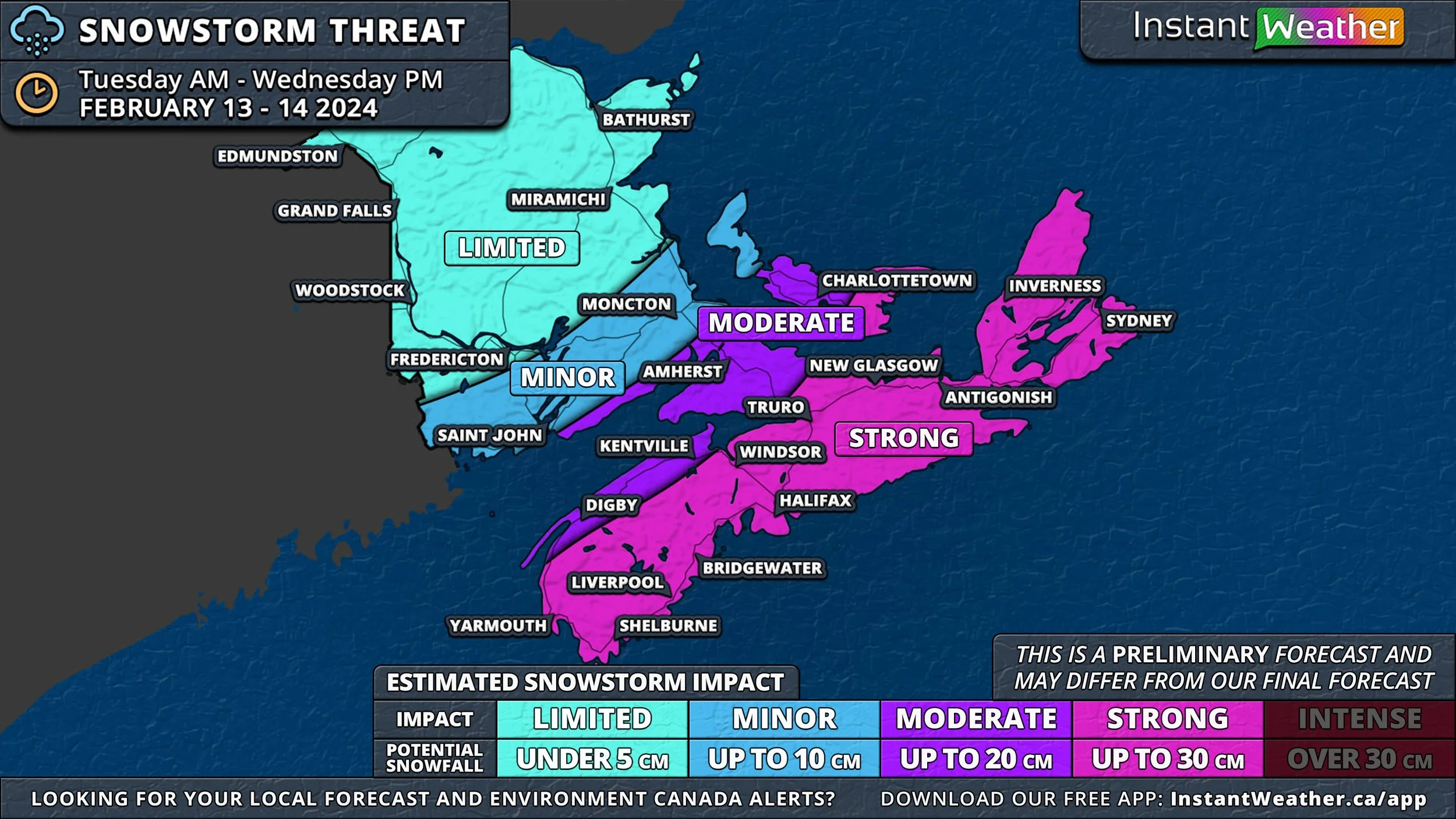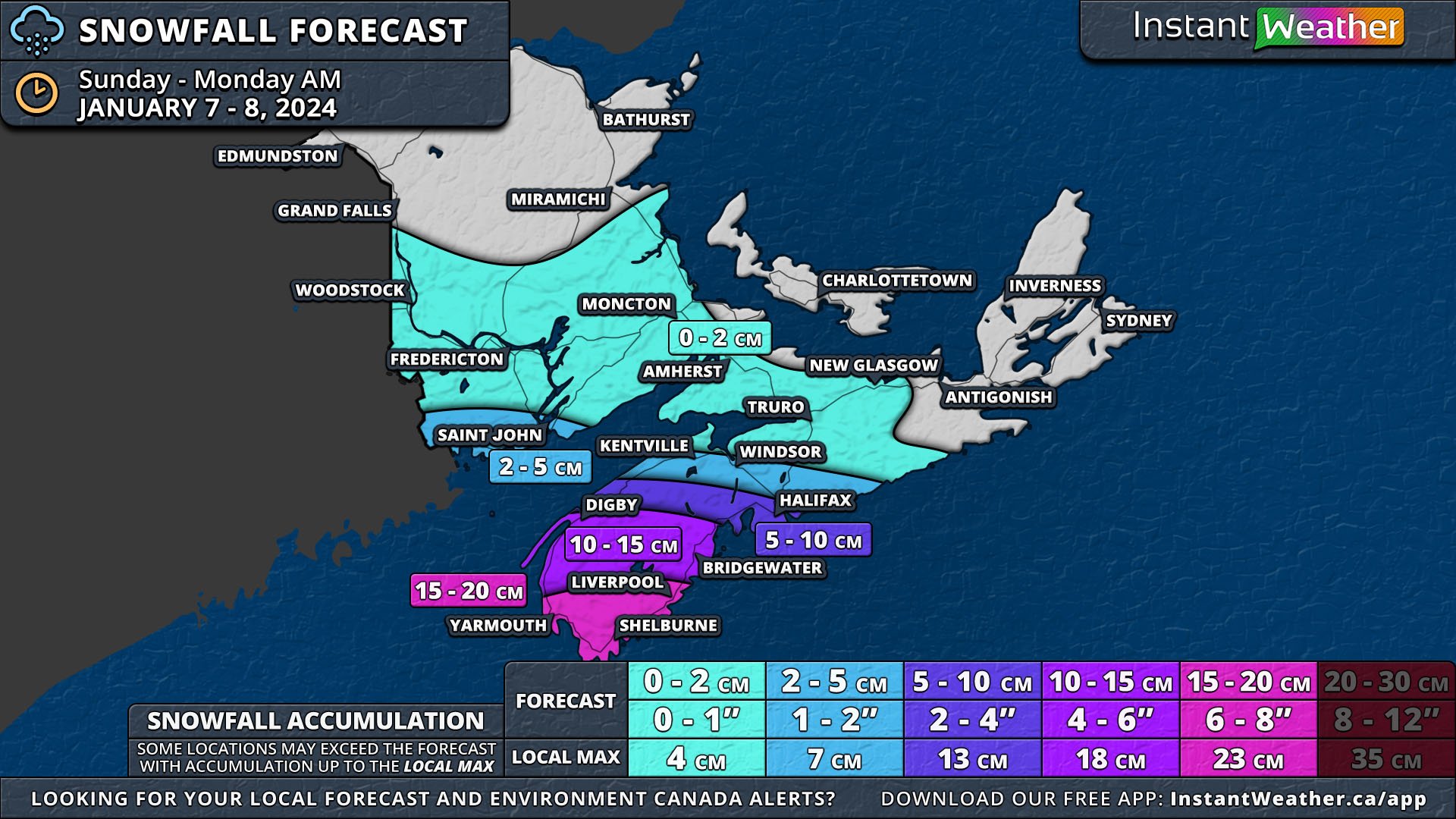Extreme Heat Moves into Nova Scotia and PEI, Becomes More Intense in New Brunswick Wednesday
/Wednesday will be the second day of the multi-day heat event that we find ourselves in due to a strong ridge of high pressure funnelling hot, humid air from the Gulf of Mexico straight into the Maritimes. While Tuesday saw the start of the event with temperatures in the upper 20s and lower 30s across the region, feeling like mid-30s, Wednesday will be even warmer and temperatures will reach the mid-30s and it will feel like the upper 30s, especially in New Brunswick.
Following overnight lows in the upper teens and low 20s overnight Tuesday, the intense heat will rapidly build throughout the morning in New Brunswick, reaching the 30°C mark before the noon hour and continuing to rise to the mid-30s across most of the province by mid-afternoon. The hot spot for the province is expected to be in the northeast, in Miramichi, Bathurst, and into the Acadian Peninsula, where temperatures will likely top out at 36°C. When combined with the humidity, it will feel like up to 39°C across a large swath of New Brunswick. Similar to Tuesday, conditions will be much more comfortable along the Fundy Coast and those in Saint John can expect a mild high of around 23°C. Once again, there will be a steep temperature gradient with temperatures rising drastically moving northward from the coast.
Nova Scotia and PEI were able to “warm up” to the heat wave, so to speak, on Tuesday, with temperatures not exceeding the 30°C mark, but that will change on Wednesday. A fairly large stretch of the interior of Nova Scotia, along with most of PEI, will see temperatures in the low 30s and it will feel like the mid to upper 30s with the humidity. Nova Scotia will have two discrete hot spots: inland Western Nova Scotia and the Northumberland Shore, including New Glasgow and into Antigonish. In PEI, proximity to the coast will not offer as much relief as in Nova Scotia, where similar to New Brunswick, there will be a very steep increase in temperature when moving inland from the coast.
Overnight lows on Wednesday will once again be in the upper teens and low 20s across the Maritimes, which will be followed by one final day of intense heat on Thursday. Unfortunately, Thursday appears to be the most humid of the three days in this heat wave and it could feel like the low to mid 40s Thursday afternoon. We will have more details in Wednesday evening’s forecast.
During extreme heat, it is crucial to stay safe and take preventive measures to avoid heat-related illnesses. Make sure to stay hydrated by drinking plenty of water, even if you don't feel thirsty. Avoid beverages that can dehydrate you, such as alcohol and caffeinated drinks.
Try to stay indoors during the hottest parts of the day, usually between 10 AM and 4 PM. If you must be outside, wear lightweight, light-coloured, and loose-fitting clothing and apply sunscreen to protect your skin from harmful UV rays.
Additionally, never leave children or pets in a parked car, as temperatures can quickly become dangerously high. Check on elderly neighbours and family members, as they are more vulnerable to heat-related illnesses.
Utilize air conditioning if possible, or visit public places like shopping malls, libraries, or community centres to stay cool. Be aware of the signs of heat exhaustion and heat stroke, such as dizziness, nausea, headache, and confusion.
Call 911 immediately if you believe you or someone around you is experiencing heat stroke.







































